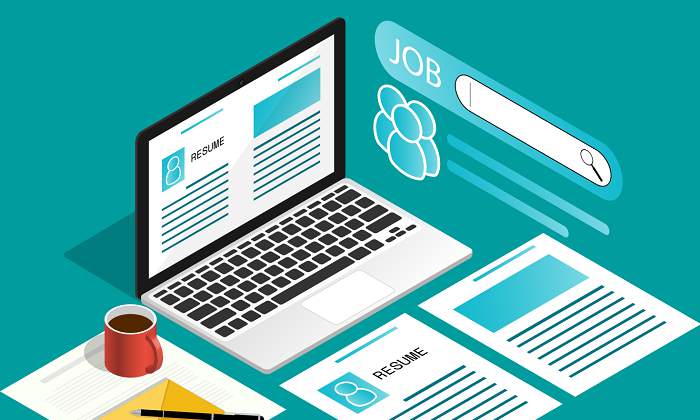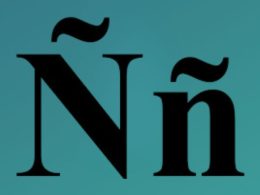Table of Contents Show
When I first went out in the job market to look for vacancies in Jaipur, the most challenging part of the process for me was the starting point. I was certain of my credentials and confident that the interview would not be a problem either. What concerned me was: How do I make the recruiters call me for an interview?
With unemployment on the rise, educational institutes churning out graduates at an alarming rate, thus increasing the competition, and the fact that one advertised position by a reputed company sometimes gets thousands of applications; I was stumped. How do I make my application rise to the top of the bundle?
The answer to this question lies in making sure that you make a good résumé, an eye-catching résumé, a résumé that demands a recruiter’s attention.
Before I get into the details of the process of writing that winning résumé, I’d like to start with a description or call it a definition of what we are about to embark on.
What most people don’t realize is that a résumé is not just a list of your academic credentials and job experiences; it’s your first and foremost tool that you use to market yourself to potential employers. And we all know that no matter how good the product is unless it is sold properly, it doesn’t sell. A well-written résumé ensures that potential employers and recruiters decide whether you are deemed fit for the job or not. It is what you use as a means to make your first impression and as first communication with your future employer.
Tailor it to fit the role
It is always advisable to adjust your résumé according to the job you are applying for. That is to say, by highlighting your experiences, competencies, and qualifications related to the job description, to make a greater impact on the recruiter.
Keep it up to Date
The first thing you should always keep in mind is that your résumé should be comprehensive and always updated. By that, I mean it should have all the relevant details. Don’t just list down everything from top to bottom. Take your time to write it. Maybe even a couple of days. If it starts to feel tiresome, read the third paragraph again and it’ll remind you how important this is. J. So, like I was saying, the trick is to update your résumé regularly, at least once every month. That ensures that all the latest detail is present in there, and you never know when a potential employer may ask for it; so it’s best to have it ready at all times, instead of updating it in a hurry and screwing up your chances.
Now let’s sit down in front of the computer and get to work.
Most people format their documents on completion. I suggest we decide on the format beforehand. What font to use, what layout to employ, in short, everything that has to do with the “LOOK” of your résumé. Writing great content without a great presentation won’t get us anywhere.
Font
Avoid using multiple fonts. Choose one and stick to it for the entire project. Changing fonts every few lines can make your content hard to read, thus speeding your résumé to the bottom of the “Rejected” pile. Don’t use flashy or fancy fonts, like Comic Sans Ms. Stick to the tried and tested ones, like Times New Roman, Garamond, Arial, or Verdana. Keeping font size 11 or 12 is advisable. Any smaller, maybe too small to read, and larger might just seem too bold.
Bulleted Format
No matter what style you choose to design your résumé in, be it self made or a ready-made template, make sure you stick to the bulleted format.
Using bullets makes your résumé appear more concise and much easier to scan. Recruiters opt for this mode of listing because reading long paragraphs of what your responsibilities had been with your last employer can be a tiresome and time-consuming exercise. Just stick to the point.
Contact Information
Always start your résumé with your name and updated contact information at the top. You must make sure that your telephone and cell phone numbers are current, and your email address is updated. Because those are the mediums recruiters will use to contact you for your interview.
Be Mature
What kind of instruction is that? Well, it is what it says. Recruiters are not looking for unprofessional candidates who reflect immaturity from their résumés.
Make sure that your email address is not something funny, or inappropriate. Email ids like “hot_hunk69@hotmail.com” are not prudent. It is advisable to create an email id with your name in it, something like “john.doe@hotmail.com.”
Also, using colored or scented paper may look flashy, but not one but professional, so avoid that all cost.
Keep it simple
The heading says it all. The appearance and language of the résumé should be simple and easy to understand. Built-in templates in word or available online may look great to you, but trust me, flashy-looking résumés mostly never make it out of the inbox. An ideal résumé one that is uncomplicated and straightforward.
Title
It is advisable to title your résumé with the position you are seeking, or whatever your expertise is. For example, if you are a human resources professional applying for an executive position, the appropriate title would be “Human Resources Executive.” This feature helps with profiling your résumé for companies that their résumé banks. Also, it increases your chances of being shortlisted if you register with online recruitment websites.
Use Headings
Always use comprehensive headings. It makes it easier to scan your résumé in one look.
Executive Summary
If you have prior work experience, this is a great way to begin your résumé. The heading pretty much sums it all up. This section should be used as your sales pitch. Write a summary of the entire document, as an outline of where exactly you are coming from, something that would help the recruiters with the screening process and save them the trouble of reading the entire document in detail.
List your skills at the start
Always list your core skills and aptitudes at the beginning. What employers want to know is how you can fill in the vacant position completely and add value to the organization.
If you are just starting and do not have any prior work experience, this can be a great way to begin your résumé.
Highlight what’s more important
Remember that you need to catch an employer’s eye (without gimmicks) so that they make a buying decision. For example, if you have weaker academics but convincing work history, put your education on the second page.
Professional Experience
Avoid using the words “Job Experience” or “Work Experience.” Professional Experience sounds a lot more professional.
Always start noting down your professional experiences in reverse chronological order, i.e. your most recent experience at the top, and so on.
Always mention dates
Yes. Always cite dates for all your experiences and academic qualifications. And be consistent.
Language
Avoid using slang and abbreviations. What with instant messengers and chatting screwing up our typing habits, be careful not to ignore simple rules of English writing, like using a capital “I” when referring to self or that the correct spellings of what is not wat.
Like I said earlier, simplicity is the key.
Honesty is the best policy
Adding false information and lies to your résumé may make it look more impressive during the screening process, but will only call for trouble during the interview.
Always make sure you list true, factual, and concise information regarding everything in your résumé. It should be such that if the employer decides to verify it for any reason, they won’t put your name in the “never interview again” list.
Also, avoid boasting about and exaggerating your experiences in your résumé. Trust me; doing so will not let you get past the interview since interviews are designed to weed out tale-tellers these days.
Résumé Length
When it comes to résumés, remember; “Less is More.” Many people have the misconception that longer your résumé, more impressive it will be. Wrong. The trick is to make it as comprehensive as possible, in as little space as possible. The ideal résumé length for someone just starting is 1-2 pages, 2-3pages for mid-career professionals, and 3-4 pages for people applying for management positions, with years of experience to show off.
Final Review
Even if you have the automatic spell checker turned on in your word processor, please re-read your résumé entirely over and over again. Recruiters can easily take typos as reflecting a careless and unfocused personality. Re-reading your résumé over a few times and having a friend read it again will only improve your chances of identifying any spelling or grammar mistakes that might have happened.
If you are currently employed, use the present tense when describing your responsibilities. For the rest of the document, use the past tense, and stick to it.
In the end, remember that a résumé is primarily a selling tool. It is not an autobiography but a way of persuading an employer to decide that your skills are worth paying for. You should think about the skills and experience that would appeal to an employer, not include everything you have done.












